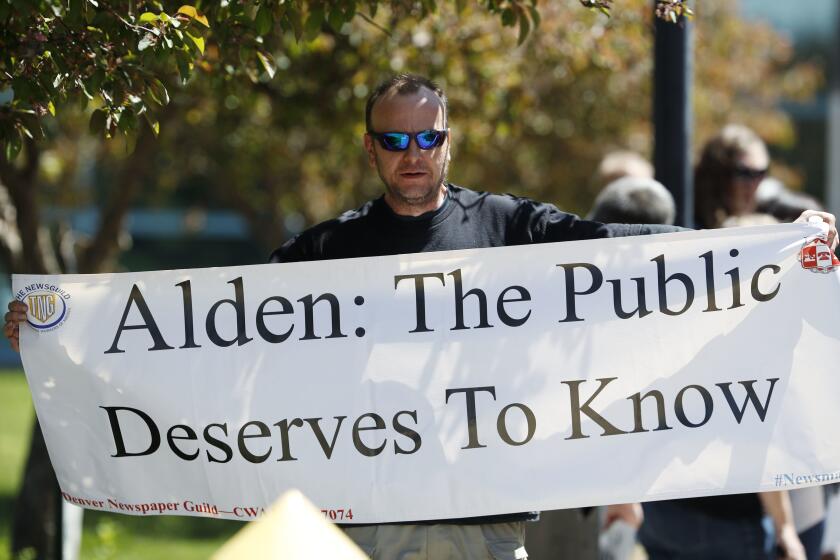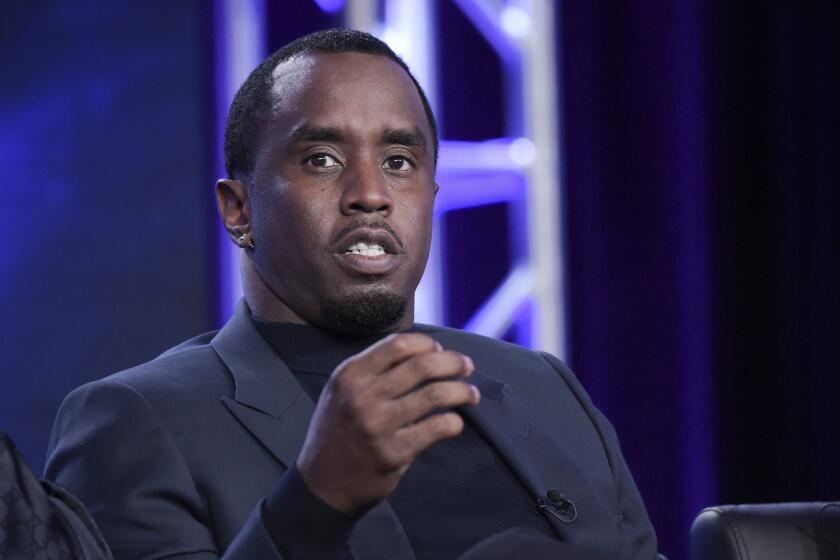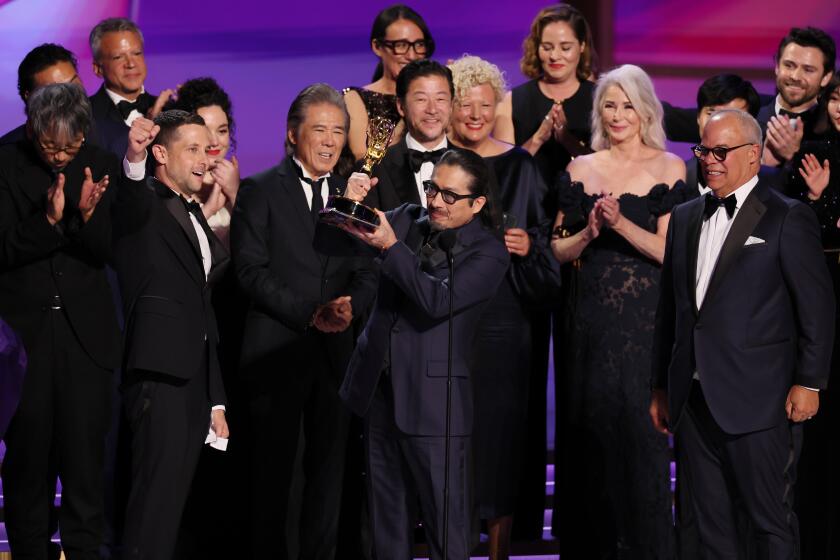CULTURE CLASH : African Americans and African immigrants seek a path to common ground, but misconceptions, stereotypes clutter the way.
Growing up in Senegal in the 1960s, Ousmane Drame envisioned America as a hip, socially enlightened land of plenty where black people enjoyed the wealth and social prominence of pop stars such as Diana Ross and Marvin Gaye.
Drame, 42, and his friends dreamed of the day they would cross the Atlantic and meet up with their American counterparts, who would no doubt greet them with black power salutes, discuss the philosophies of their mutual hero, Malcolm X, sport the same Afro hairstyles they had adopted and embrace them as brothers.
But when Drame finally came to Los Angeles in 1979 to pursue an education in flight instruction, he was rudely awakened. Not only was he not wholly embraced by black Americans, he was frequently stung by remarks about his French accent and inane questions about whether he carried a spear or if the town he grew up in had plumbing.
“Americans are brought up with a great ignorance of Africa,” said Drame, who lives with his sister in the Mid-City area. “The things some black people say about it--even educated, professional people--upset me at one time. But not any more. I’m used to it.”
Drame’s experiences are shared by many African immigrants in Los Angeles’ black community. Despite the popularity of African hairstyles, dress, art and music on the streets and in the shops of Crenshaw and South-Central, Africans and black Americans remain divided by vastly different cultures, history and persistent misconceptions about each other.
Though a growing number of groups are working to bridge the gap, Africans say most Americans either romanticize Africa as a monolithic motherland or--more commonly--think of it as an interesting but faraway place too physically and culturally remote to relate to their lives.
“How could it be otherwise?” said Earl Ofari Hutchinson, an author and lecturer on the socioeconomic conditions of blacks in America. “Other than the basic trappings--the kente cloth, kufi hats and hairstyles--we’re American. In spite of the mystical thing a lot of black people have about Africa, there really is no connection.”
Drame, though he says he enjoys good relationships with his American neighbors and acquaintances, agrees. “Many blacks here don’t want to admit it, but they are much more American than they are African,” he said.
“They try and take (African culture) on, but it doesn’t work,” he says. “I see a lot of things that are different, not African at all. Here, there is too much pressure to achieve money--the American Dream. . . . People are too concerned about selling themselves, about image.”
Drame and other immigrants say that at the root of the misperceptions is geographical and historical ignorance. Too many Americans think of Africa as one country, rather than the world’s largest continent containing 52 nations and thousands of ethnic groups and languages. Even West Africa, the region where most black Americans can trace their roots, boasts more than 20 countries and a vast array of peoples, languages and customs.
Despite their symbolic importance to black Americans, Africans are a relatively small percentage of the total immigrant population countywide. According to the 1990 U.S. Census, 28,850 Africans from all nations live in Los Angeles County; by contrast, the number of immigrants from Mexico is 1.2 million. Among the immigrants from Africa, Egyptians make up the largest group at 10,271, followed by 3,363 South Africans, 2,900 Nigerians and 2,890 Ethiopians.
Africans are scattered all over the region, from South-Central to suburbs as far-flung as Riverside. And though an African business community is thriving in the predominantly black Crenshaw district, few African merchants are members of the local Chamber of Commerce.
“They’re sometimes reluctant to join because of language differences,” said Crenshaw Chamber of Commerce President Ted Fortier. “And it may be cultural. Whatever the case, they don’t speak up.”
Still, a quick tour of Crenshaw and nearby Leimert Park reveals a strong African presence, from hair salons to record shops to boutiques offering custom-made sandals and African garb. The highest concentration is on a short stretch of Degnan Boulevard in Leimert, where galleries, studios and shops offer the widest selection of African-themed goods in town.
Yet this visual feast, says Crenshaw merchant Elizabeth Yiaba, is for the most part just that--on the surface.
“There are some black people here who are curious to find out what Africa is all about, but I’ve found many more differences than parallels,” said the 30-year-old Sierra Leone native, who owns an African goods boutique called Yaba’s Collection. “What some people may think is that skin color is enough to bind us together. But it isn’t.”
Yiaba began a local cable talk show a year and half ago that strives to demystify Africa for Americans, and vice versa. For all their talk about black pride, she says, Americans harbor negative views about Africa, views that are fed by constant media images of floods, famine, tribal wars and political turmoil.
“Americans don’t want to say it, but they are still ashamed of Africa. Many of them think of it as primitive,” she said. “My 5-year-old daughter, who was born here, came home one day from school and told me she had told other children she was African. They laughed at her, teased her. She told me, ‘Mommy, I’m not telling them that any more. I’m telling them I’m American.’ Already, she wants to hide her identity.”
Dieynaba Gaye, 33, said that when she came to America from Senegal in 1984, her elaborate braids and traditional brocade and damask dresses were considered an oddity. Though she sees them on every street corner now, she wonders if their popularity is simply a passing fad. Still, she is glad that blacks from Jesse Jackson to high school students are embracing something about Africa “even if they don’t understand its significance.”
Deeper, socioeconomic issues separate the two groups, Gaye said. Like other immigrant groups, most Africans come to America seeking college educations and business opportunities, and some are disdainful of black Americans, whom they perceive as mired in poverty because of laziness or lack of initiative.
“There are cultural stereotypes on both sides,” she said. “I always thought black Americans were light-skinned, had long hair, drove nice cars--the Ebony and Essence magazine images. I thought American streets were paved with gold.
“When I first got here, to Washington D.C., I saw an old black woman begging for food in the dead of winter. I said to my friend, ‘What, in America?’ I couldn’t believe my eyes.”
*
Charles Anyiam, publisher of the African Times, a community newspaper for Africans living in Los Angeles, says the hard-work ethic that Africans share with other immigrants fosters resentment among some black Americans, who see black foreigners succeeding while they are not.
“We have the same immigrant mentality as everyone else. We don’t really work any harder than we do in our own countries,” said Anyiam, who is Nigerian. “But you have to realize, 80% of African immigrants here came because of education. They don’t represent the masses, the poor. But the elite stereotype adds to the mutual distrust that’s already there.”
Yet there are, and for many years have been, efforts to bring Africans and African Americans together in more meaningful and lasting ways than weekend festivals.
Besides a wealth of shops and galleries, the Crenshaw district boasts the African American Cultural Center, where prominent Africans frequently host public forums; the Marcus Garvey School, an institution that steeps its curriculum in African history; and Degnan Boulevard’s Museum in Black, filled with artifacts that stunningly detail both African and American histories: ebony masks, spears, tools, rusted slave manacles, documents announcing public slave auctions in the early 1800s, grinning Aunt Jemima figurines.
That persistent American longing to connect to a heritage nearly dismantled by generations of slavery and institutionalized oppression is what fuels the effort to reach out to Africans, says Museum in Black owner Brian Breye. With the whirlwind decline of South African apartheid and the ascendancy of Nelson Mandela to the presidency of the country, Breye said, the interest in Africa among black Americans is on the rise.
*
“We’ve always had negative or semi-negative views of Africa, but that’s changing,” he said. “Africa is becoming the ‘in’ thing now. I don’t think it’s a fad this time. Now that blacks are moving up on the world scene, there are real possibilities for developing economic ties.”
Nikki Tesfai, director of the African Community Refugee Center in Mid-Wilshire, which serves chiefly Somali and Sudanese immigrants, shares some of Breye’s optimism.
“There’s never been a point where I could just pick up the phone and call an American to take in a (refugee African) family. It’s not an automatic relationship between Americans and Africans,” said Tesfai, an East African native. “But things have gotten much better in the last 10 to 15 years. There is more awareness, more communication.”
*
Ghanaian-born actress Akuyoe Graham has been breaking down biases for the past several years with the universal language of art. Graham says she consistently gets cathartic responses from American audiences to her one-woman show, “Spirit Awakening,” which chronicles her own struggle to establish her ethnic identity in Europe and America.
“Kids cry, teachers cry after seeing the show,” said Graham, who tours and conducts autobiography workshops at inner-city schools and juvenile halls. “They suddenly realize that Africa is not what they see in newspapers. They see that they are much more than former slaves. . . . In my view, all black people are Africans. We’re beginning to accept that as truth.”
It is a truth that Melva Parhams believes in so strongly that she is leading a campaign to officially declare the Crenshaw district the African International Village. Working with Africans and black Americans, Parhams and the African International Village Assn. have lobbied local politicians and others to designate Crenshaw as a black business and cultural enclave much like Chinatown and Koreatown.
“It’s time to go past all that Tarzan, headhunting, cannibal mentality,” Parhams said in AIVA’s Crenshaw Boulevard office, outfitted with computers and drafting boards. “We need to acknowledge our proud history of pharaohs, queens, chiefs. In this country, we’re all just kidnaped Africans.”
Civil engineer Ken Eke says he and other AIVA members believe that Americans can profit both culturally and economically by joining forces with African business people and professionals like himself.
“In Africa, we create welfare for each other. You are taught to strive for education, do whatever you can to benefit your family and community of friends,” said Eke, who is Nigerian. “We don’t have government social security or welfare, we do for ourselves. There is much that Americans can learn from us.”
*
Michael Williams is one American who is trying to do just that. Williams, owner of Leimert Park’s Comedy Act Theater, has been hosting cultural-exchange gatherings of Africans and Americans at his Inglewood home to help bridge the gap. He made a vow to himself while recovering from cancer that he would try to extend his lifetime admiration of African cultures to other Americans.
“I’ve always felt Africa was my home, ever since I was a kid,” Williams said at a recent get-together, dressed in a dashiki emblazoned with the words, “Afrika Spirit.” “It’s really all on us as Americans to learn about Africa. I wanted to create a forum where Americans could meet as many Africans as possible.”
During the party, impassioned responses to questions--Is Liberia still considered an American homeland? To what extent are women repressed?--filled the high-ceilinged living room packed with Nigerians, Senegalese, Ghanaians, Cameroonians, Swazis and a contingent of curious Americans. The afternoon event lasted well into the evening.
The exchanges left Sissoko Aboubacar, a Senegalese businessman, determined to keep trying to bring Africans and African Americans together.
“We have to make changes ourselves, as people of African descent,” he said. “There are many things we could do together, that we could do tomorrow, but we don’t. The bottom line is, we have to get with each other.”
AFRICAN IMMIGRATION
A total of 28,850 African immigrants live in Los Angeles County, according to 1990 U.S. Census figures. More than half that number--15,238--immigrated here between 1980 and 1990.
1. Egypt: 10,271 2. South Africa: 3,363 3. Nigeria: 2,900 4. Ethiopia: 2,890 5. Morocco: 1,753 6. Kenya: 985 7. Ghana: 780 8. Senegal: 94 9. Cape Verde: 8 Other: 5,806
* ONE WOMAN’S DREAM: Community activist Melva Joyce Parhams is the driving force behind plans for African International Village, a themed district along the Crenshaw corridor. Page 22
More to Read
The biggest entertainment stories
Get our big stories about Hollywood, film, television, music, arts, culture and more right in your inbox as soon as they publish.
You may occasionally receive promotional content from the Los Angeles Times.










